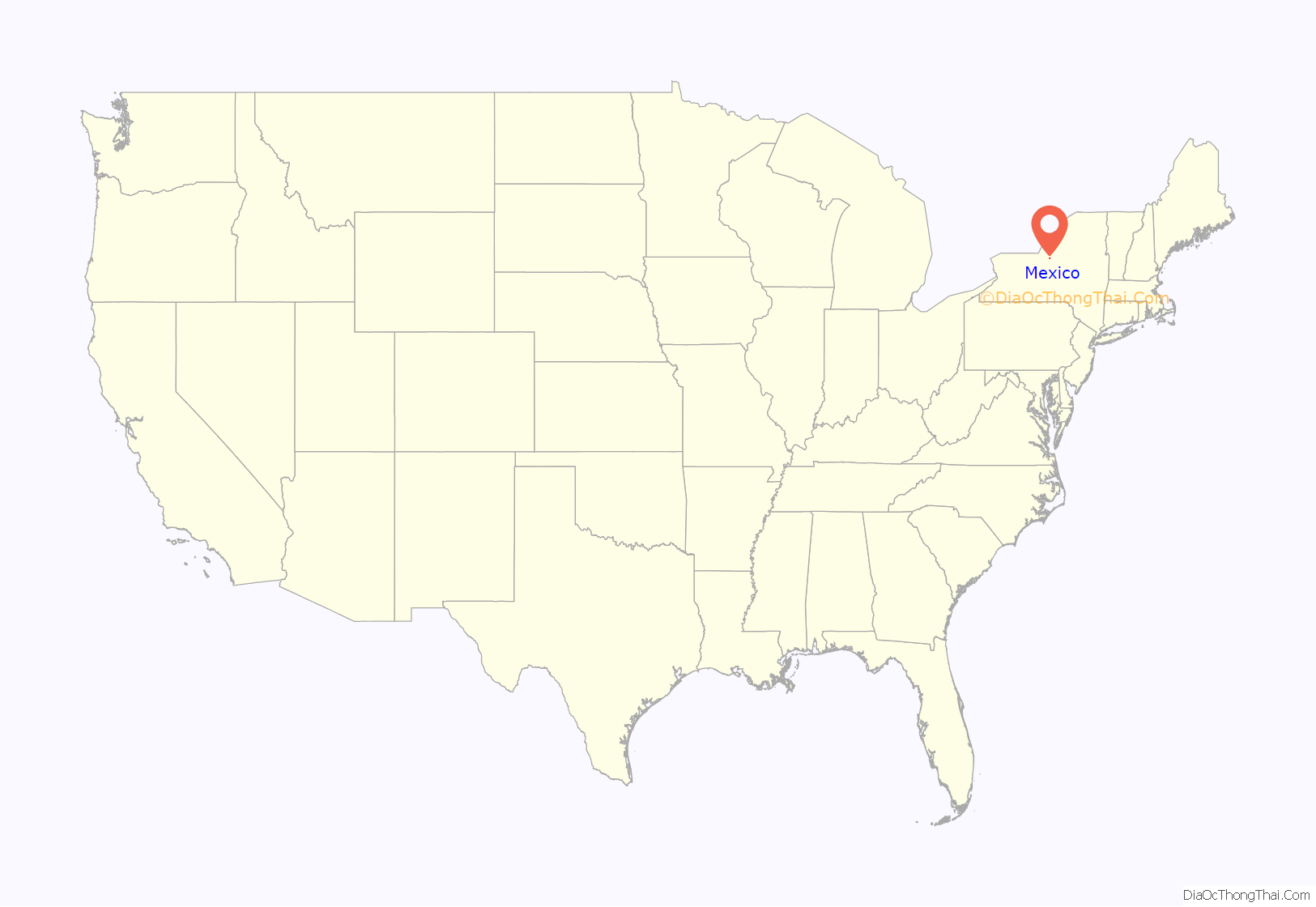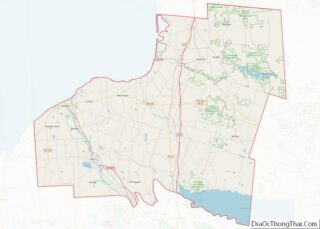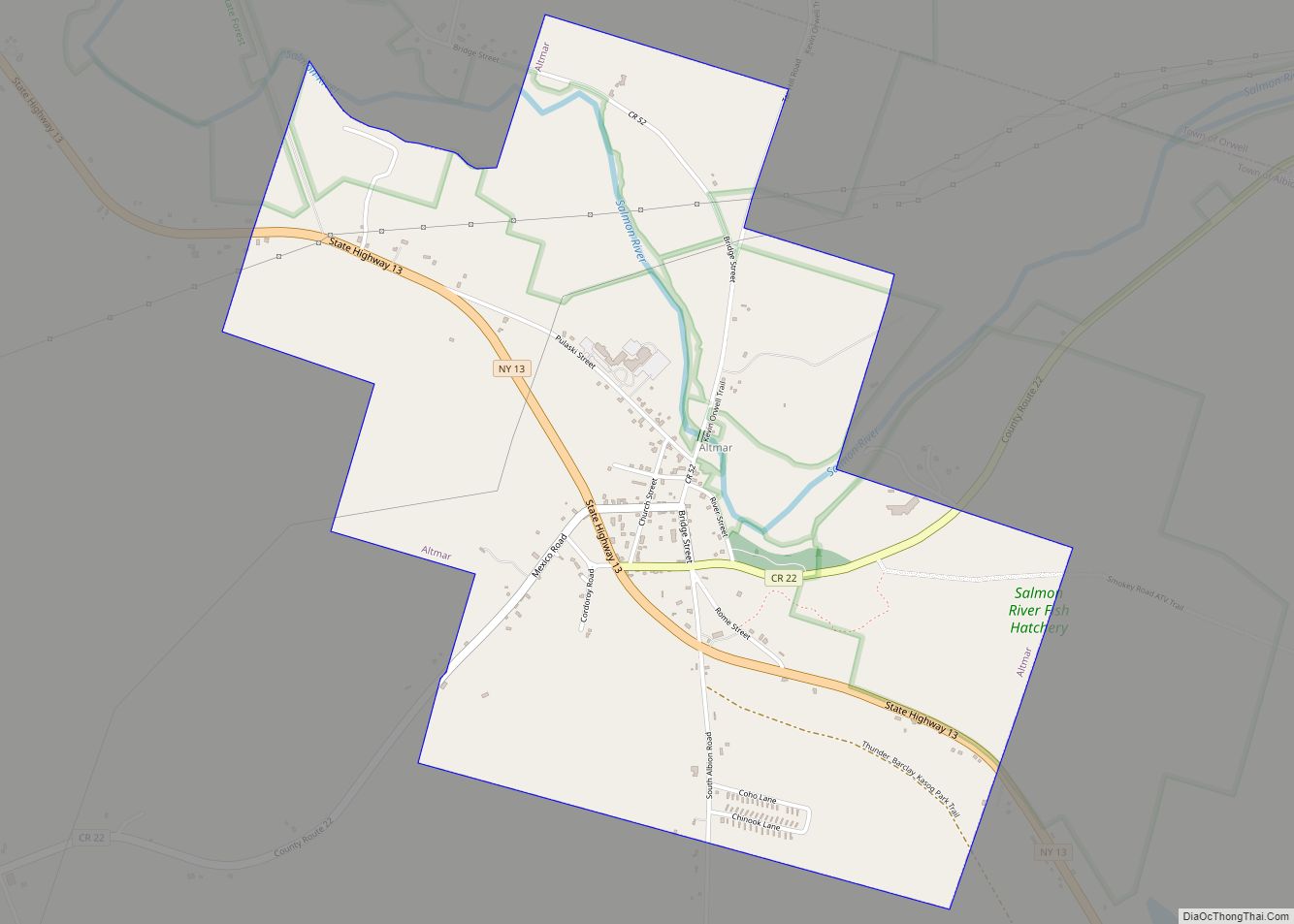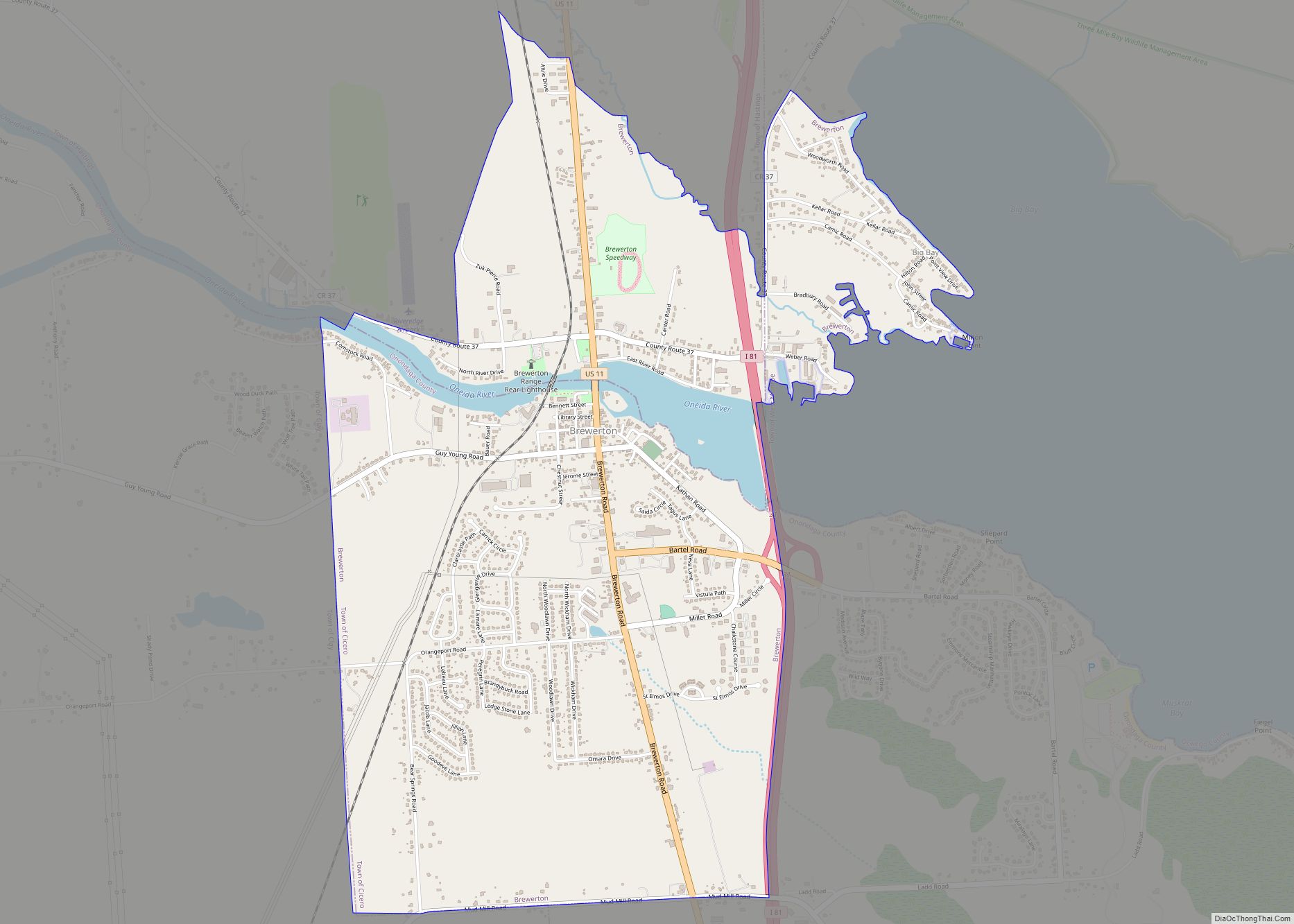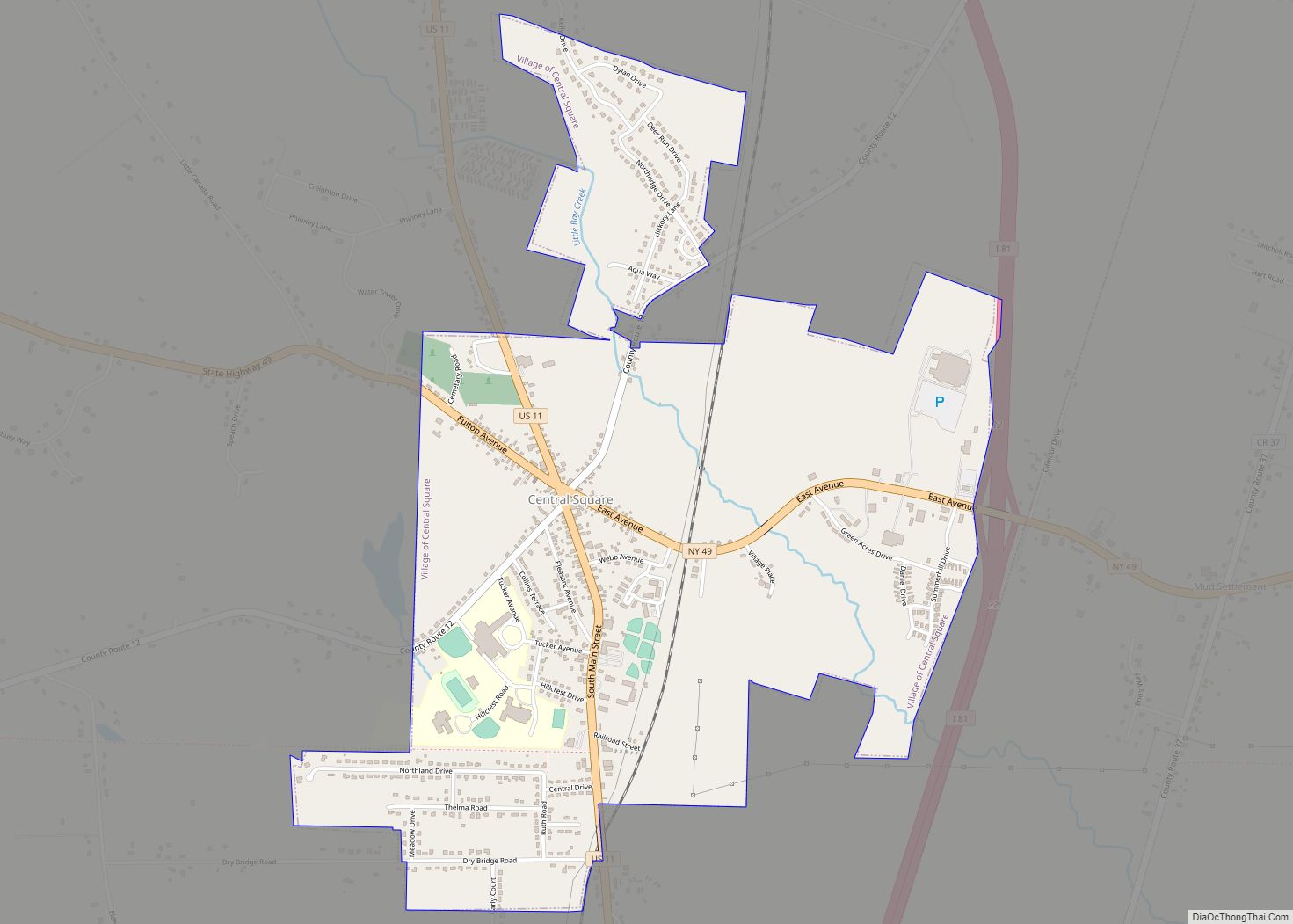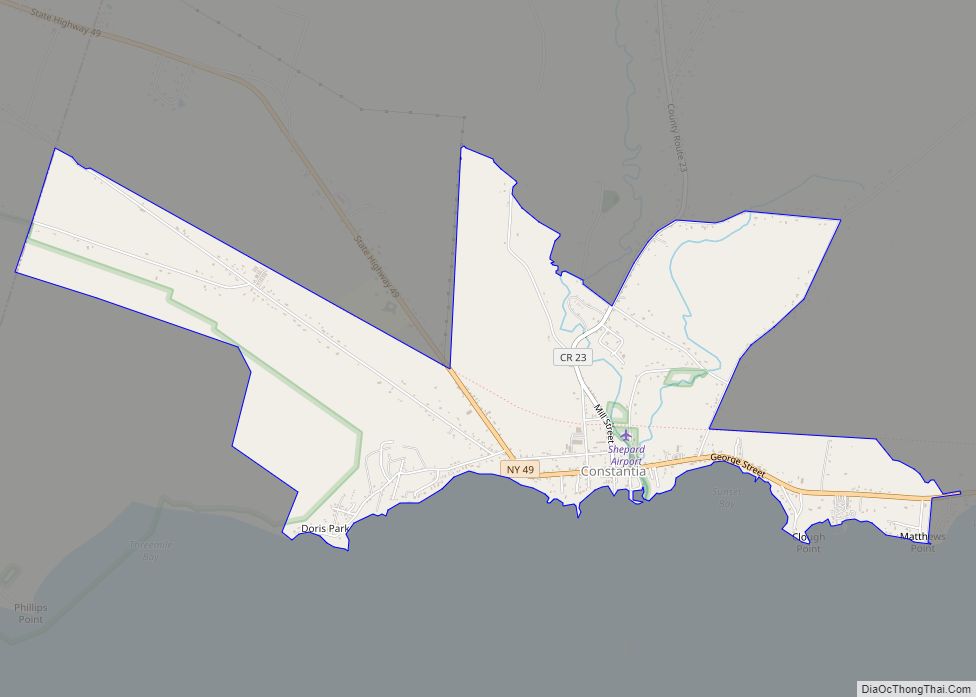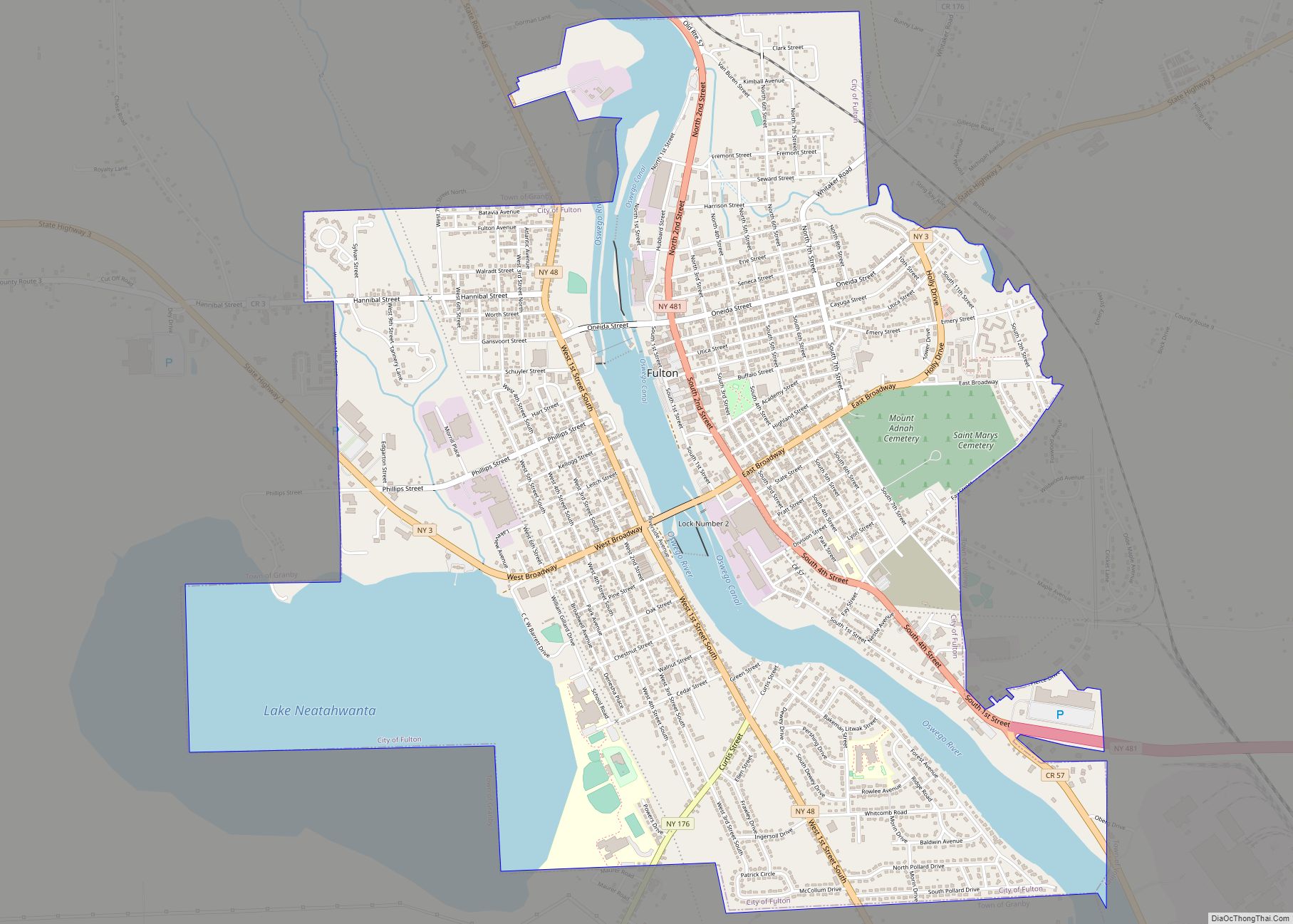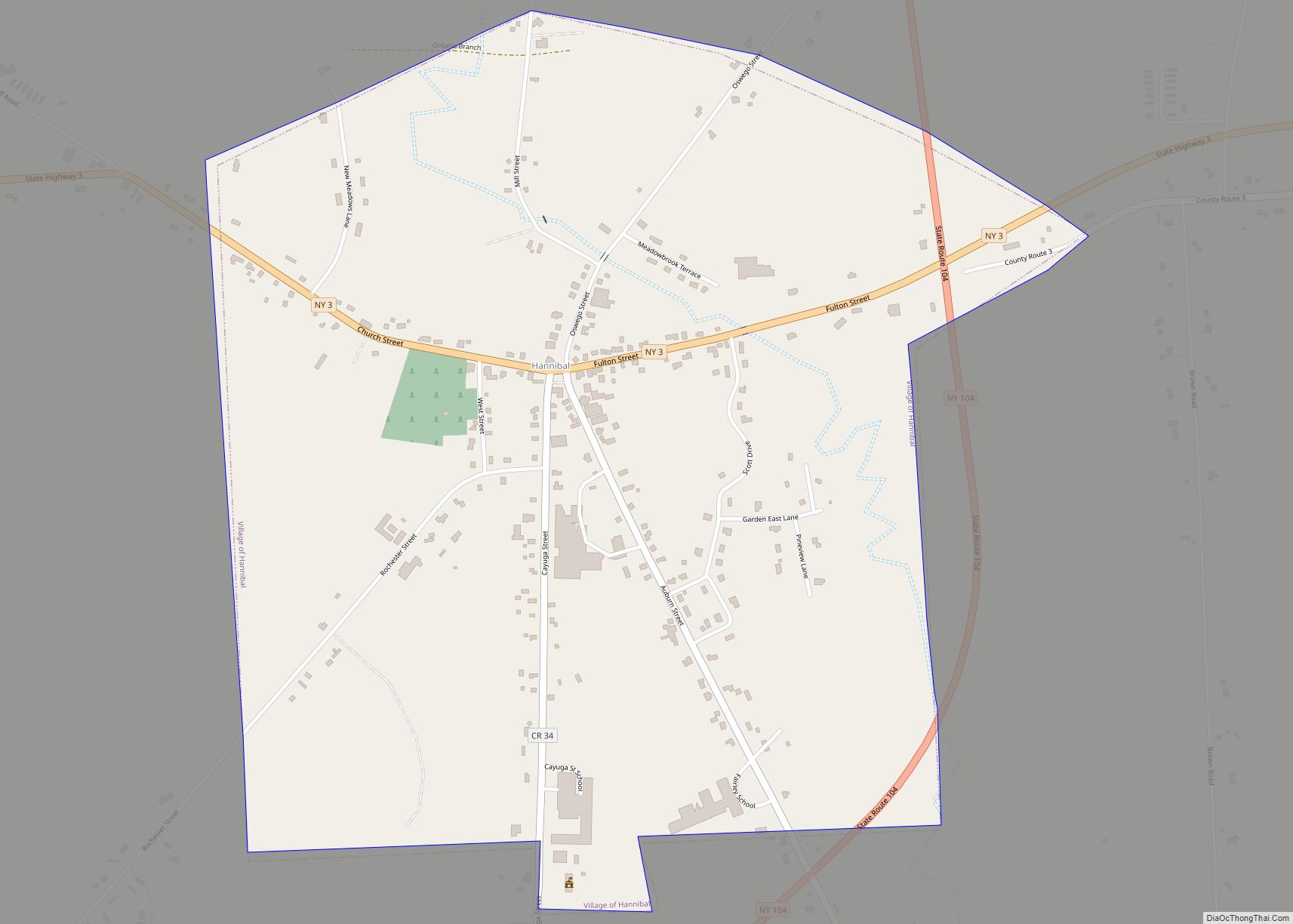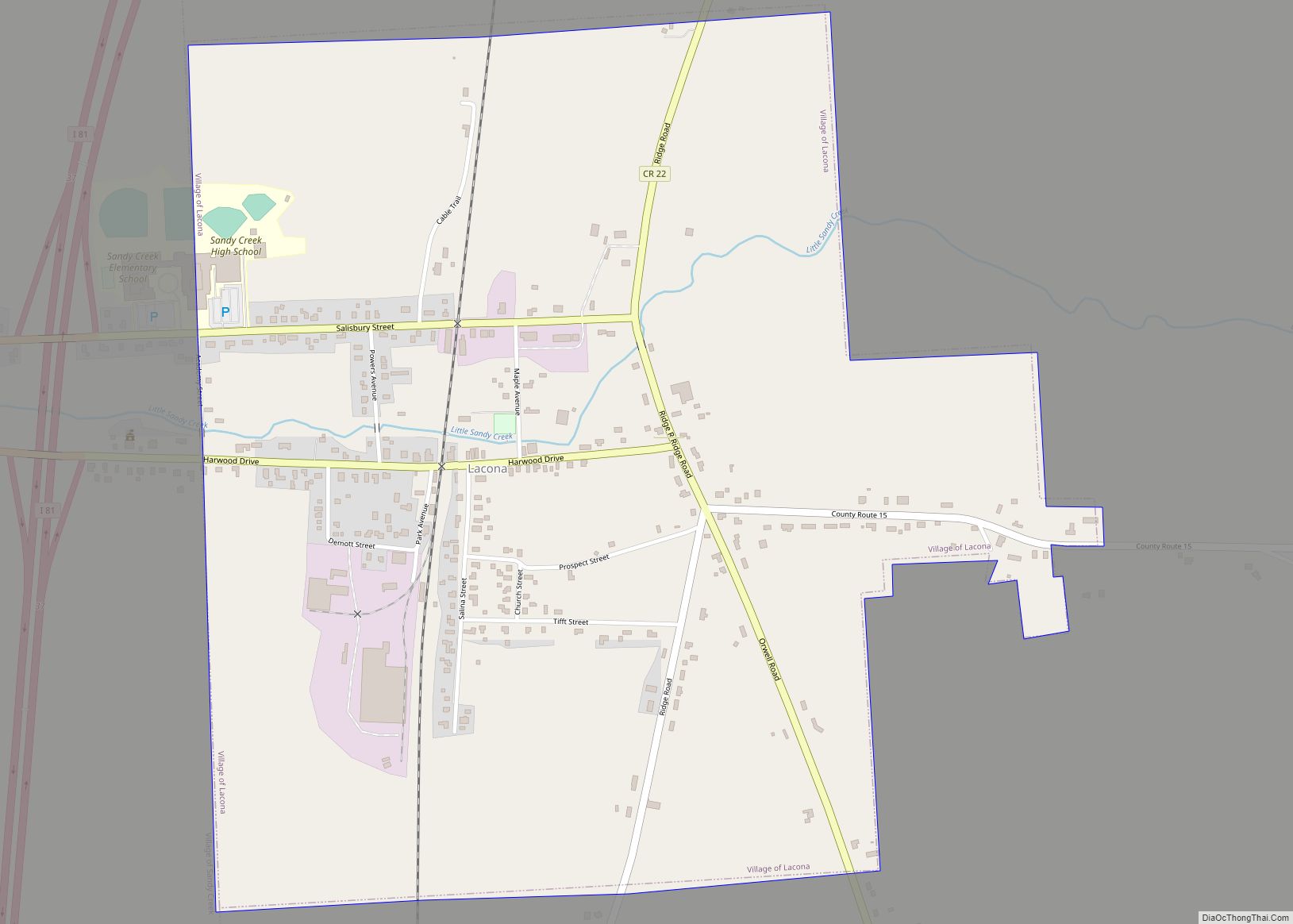Mexico is a village located in the Town of Mexico in Oswego County, New York, United States. The population was 1,624 at the 2010 census. The village is located along New York State Routes 3, 69, and 104.
| Name: | Mexico village |
|---|---|
| LSAD Code: | 47 |
| LSAD Description: | village (suffix) |
| State: | New York |
| County: | Oswego County |
| Elevation: | 410 ft (125 m) |
| Total Area: | 2.15 sq mi (5.55 km²) |
| Land Area: | 2.15 sq mi (5.55 km²) |
| Water Area: | 0.00 sq mi (0.00 km²) |
| Total Population: | 1,531 |
| Population Density: | 713.75/sq mi (275.62/km²) |
| ZIP code: | 13114 |
| Area code: | 315 |
| FIPS code: | 3646811 |
| GNISfeature ID: | 0957047 |
Online Interactive Map
Click on ![]() to view map in "full screen" mode.
to view map in "full screen" mode.
Mexico location map. Where is Mexico village?
History
The first Mexico (a proposed county), with all the surrounding towns, was originally created from Town of Whitestown, Herkimer County, New York, on April 10, 1792 by the State Land Commissioner. It was to include present day Oswego and Jefferson Counties. The original organization of the proposed Mexico County and a town of that name was abandoned for a time. In December 1794, George Frederick William Augustus Scriba purchased and patented a large tract of land; subsequently becoming a second Mexico, hence the Village of Mexico and the Town of Mexico.
George Scriba also later opened roads traveling from Mexico Bay and Mexico Point from what is now Mexico Point State Park to present-day Constantia, as well as a highway to present-day Oswego.
Settlers grew quickly in both the Town and Village of Mexico. The presence of roads, log cabins, frame houses, and businesses encouraged growth. Mexico’s early businesses included saw mills, oil-mills, gristmills, asheries, tanneries, blacksmiths, tinsmiths, coopers, cheese plants, cloth-dressings, distilleries, shoe-shops, hotels, general merchandise, and jewelers.
Lewis Miller invented the spring wagon and the high quality of these wagons made them famous all over the county.
Lulu Brown began making pans of baked beans to sell in grocery stores in 1937. They sold so well that her husband Earl and her son Robert E. Brown decided to sell them in Oswego. The business grew and relocated to the second story of the building at the south east corner of South Jefferson and Main Streets. Earl Brown died in 1938 and shortly after Richard G. Whitney joined the firm, forming Brown-Whitney-Brown (BWB). The business has since evolved into the world-famous Grandma Brown’s Baked Beans.
With growth disease was prevalent. Between 1812 and 1820 a cholera-like disease spread throughout the region, a fatal form of dysentery, as well as ague and bilious fevers. More than one-half of the settlers died of these scourges during the first 20 years of the settlement.
In 1813 a system of public schools was established with 14 districts. The number increased to 19 by 1895 as new settlements developed. In 1822 a two-story brick school housing grades on the first floor and high school on the second. This was called “The Academy” and was admitted to the state system by the regents in 1833. Mexico was the first school of secondary education to be founded in what is now Oswego County. Mexico was the first school to centralize in Oswego county. This occurred in 1936 when 31 districts in the towns of Mexico, Palermo and New Haven closed to make Mexico Academy and Central School. An elementary school continued in New Haven and Palermo while the rest of the students were bussed to Mexico.
Mexico also played its part in the abolition of slavery. As early as 1835 citizens signed petitions which were sent to Washington requesting the abolishment of slavery. Asa Wing was a prominent speaker who traveled across the state urging voters to pressure their representatives to pass new laws prohibiting ownership of slaves. Starr Clark was leader in the Underground Railroad and was the station master of the area.
The historic core of the village was listed on the National Register of Historic Places in 1983 as the Mexico Village Historic District. Also listed are the Mexico Octagon Barn, Mexico Railroad Depot, Hamilton Farmstead, Mexico Academy and Central School, Starr Clark Tin Shop, Peter Chandler House, Orson Ames House, Leonard Ames Farmhouse, Leonard Ames Farmhouse, Phineas Davis Farmstead, Thayer Farmstead, and Timothy Skinner House. The Mexico Stone Store was added in 2010.
Mexico Road Map
Mexico city Satellite Map
Geography
Mexico is located at 43°27′51″N 76°14′4″W / 43.46417°N 76.23444°W / 43.46417; -76.23444 (43.464173, -76.234643).
According to the United States Census Bureau, the village has a total area of 2.1 square miles (5.5 km), all land.
See also
Map of New York State and its subdivision:- Albany
- Allegany
- Bronx
- Broome
- Cattaraugus
- Cayuga
- Chautauqua
- Chemung
- Chenango
- Clinton
- Columbia
- Cortland
- Delaware
- Dutchess
- Erie
- Essex
- Franklin
- Fulton
- Genesee
- Greene
- Hamilton
- Herkimer
- Jefferson
- Kings
- Lake Ontario
- Lewis
- Livingston
- Madison
- Monroe
- Montgomery
- Nassau
- New York
- Niagara
- Oneida
- Onondaga
- Ontario
- Orange
- Orleans
- Oswego
- Otsego
- Putnam
- Queens
- Rensselaer
- Richmond
- Rockland
- Saint Lawrence
- Saratoga
- Schenectady
- Schoharie
- Schuyler
- Seneca
- Steuben
- Suffolk
- Sullivan
- Tioga
- Tompkins
- Ulster
- Warren
- Washington
- Wayne
- Westchester
- Wyoming
- Yates
- Alabama
- Alaska
- Arizona
- Arkansas
- California
- Colorado
- Connecticut
- Delaware
- District of Columbia
- Florida
- Georgia
- Hawaii
- Idaho
- Illinois
- Indiana
- Iowa
- Kansas
- Kentucky
- Louisiana
- Maine
- Maryland
- Massachusetts
- Michigan
- Minnesota
- Mississippi
- Missouri
- Montana
- Nebraska
- Nevada
- New Hampshire
- New Jersey
- New Mexico
- New York
- North Carolina
- North Dakota
- Ohio
- Oklahoma
- Oregon
- Pennsylvania
- Rhode Island
- South Carolina
- South Dakota
- Tennessee
- Texas
- Utah
- Vermont
- Virginia
- Washington
- West Virginia
- Wisconsin
- Wyoming
